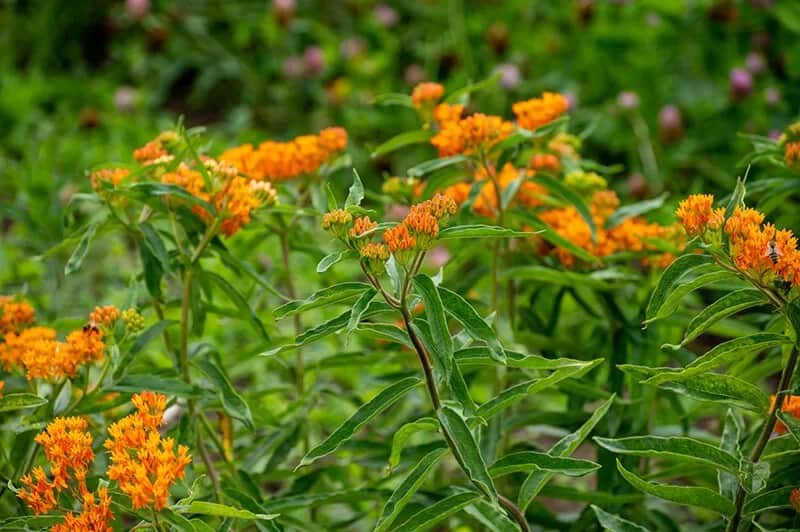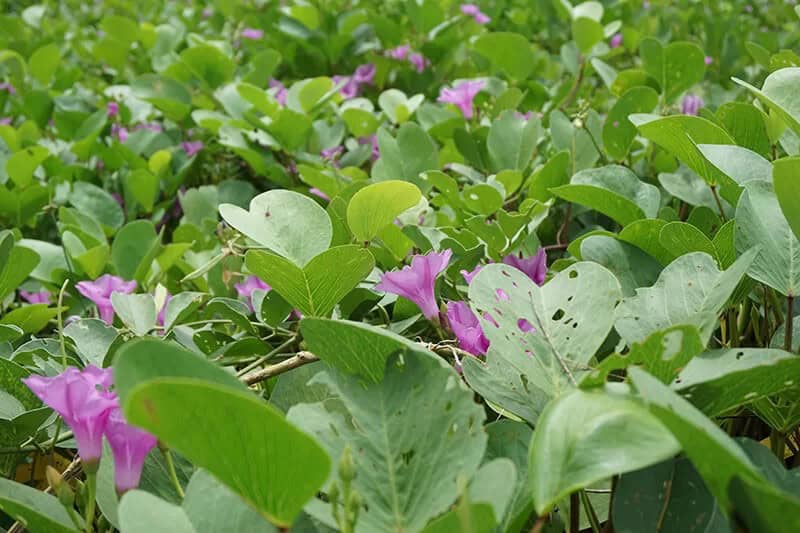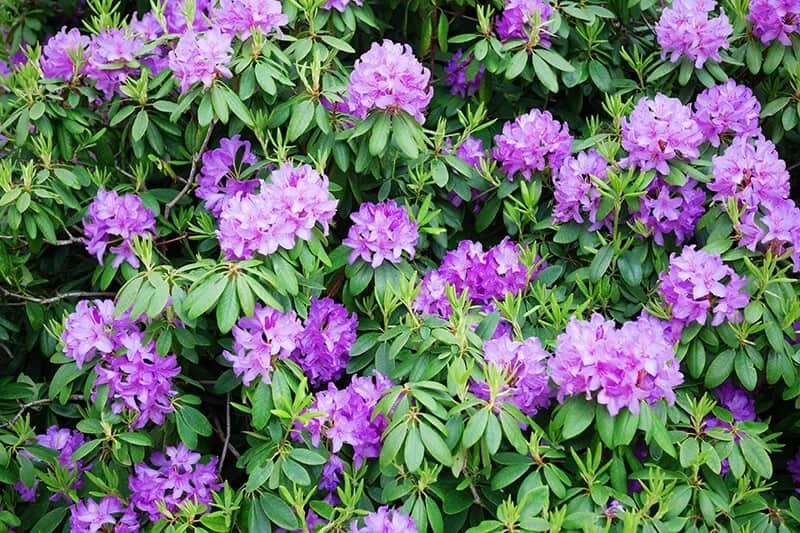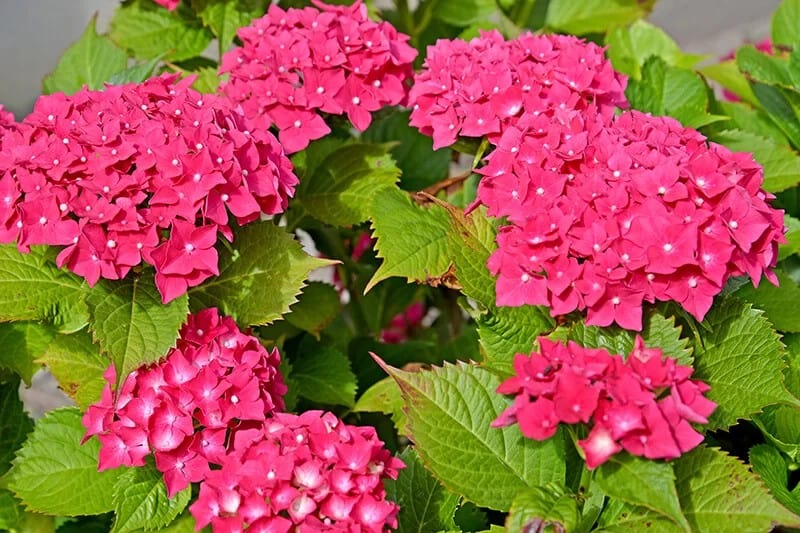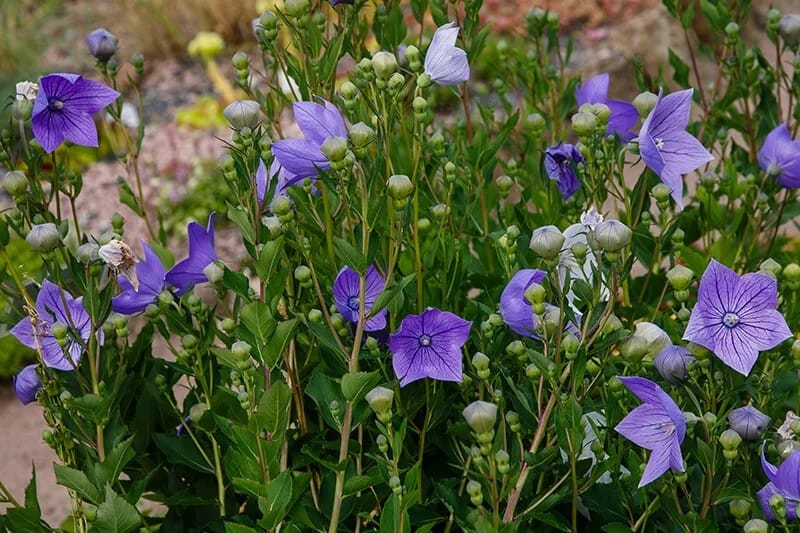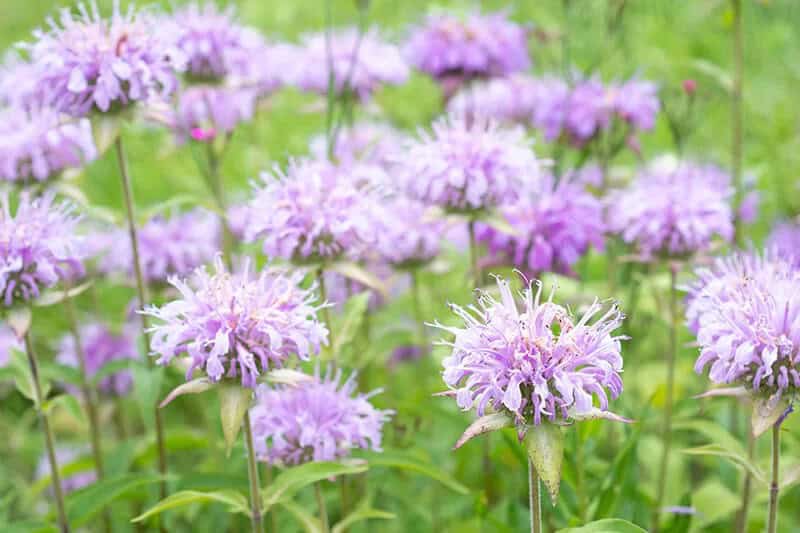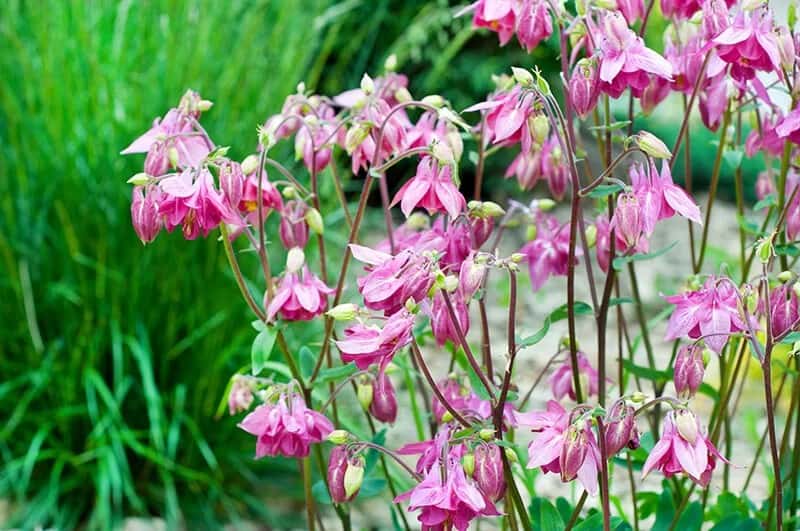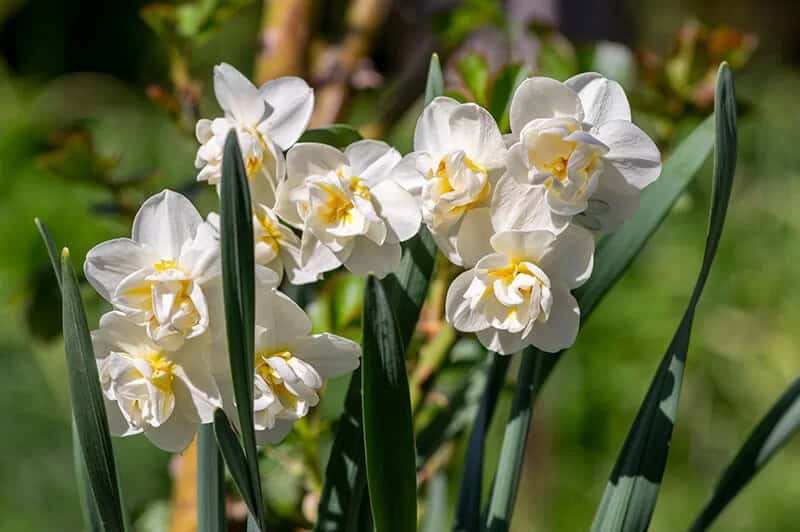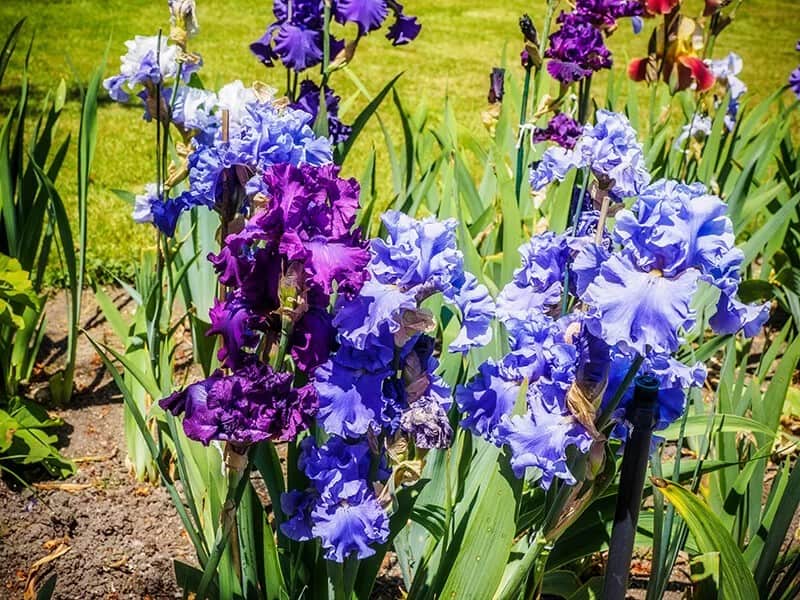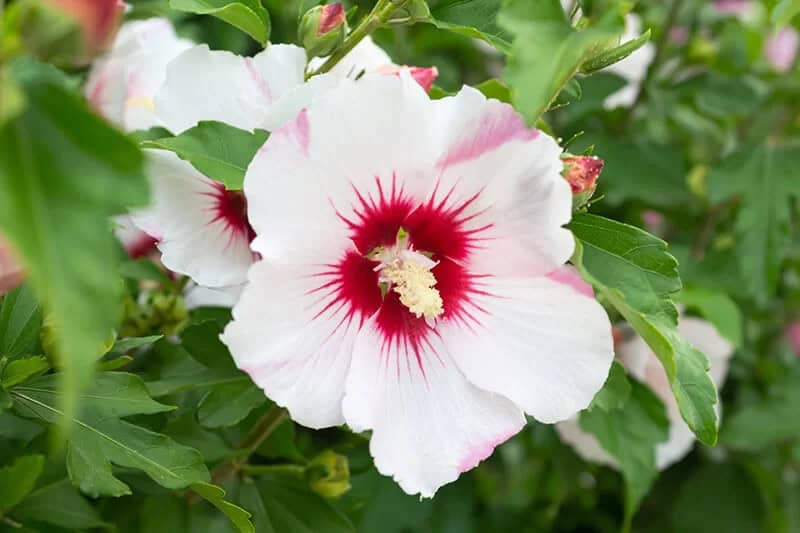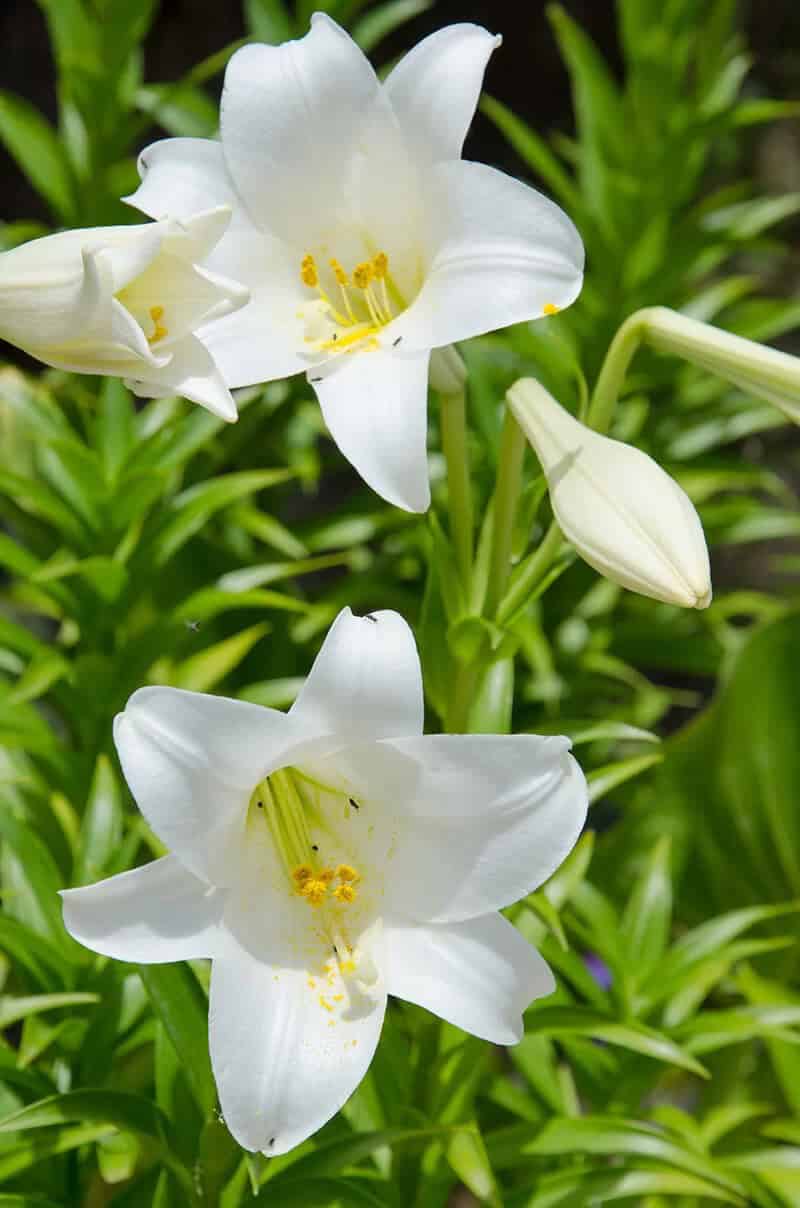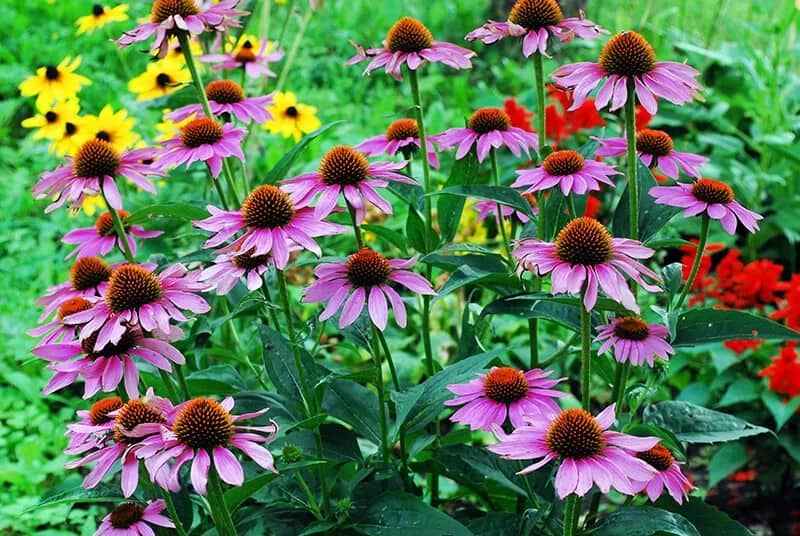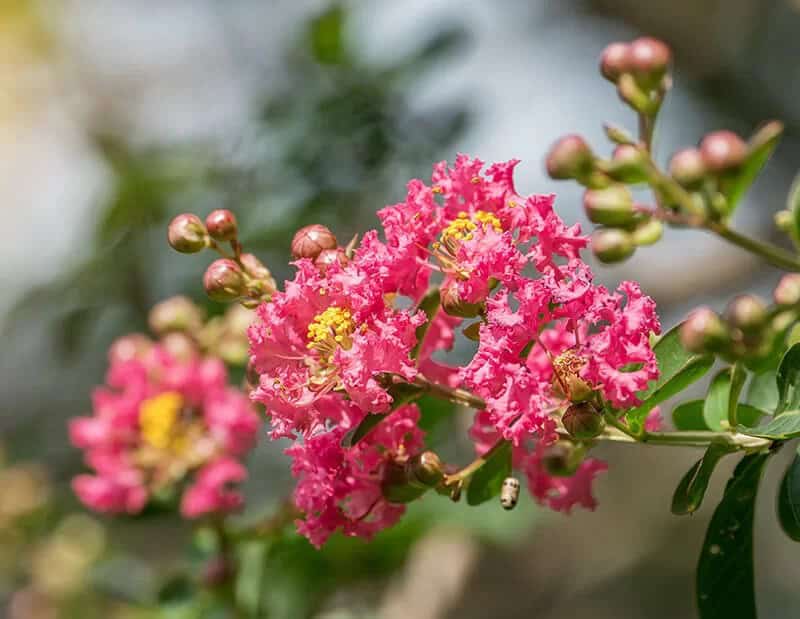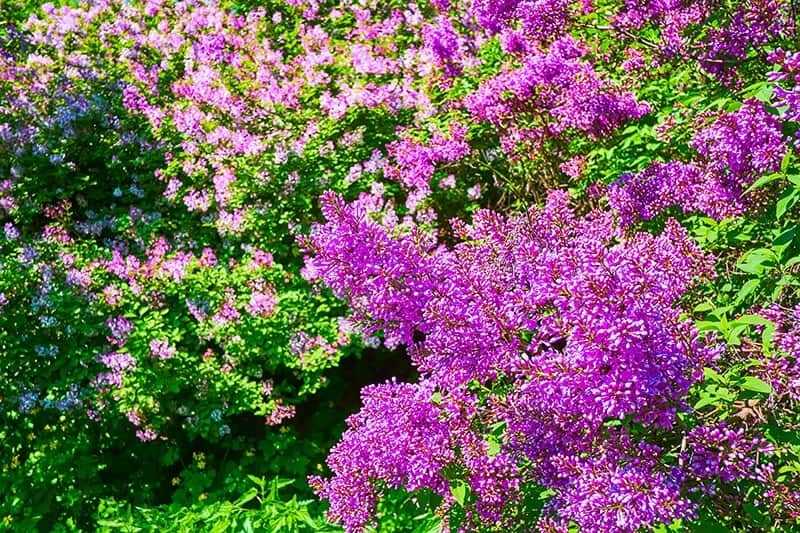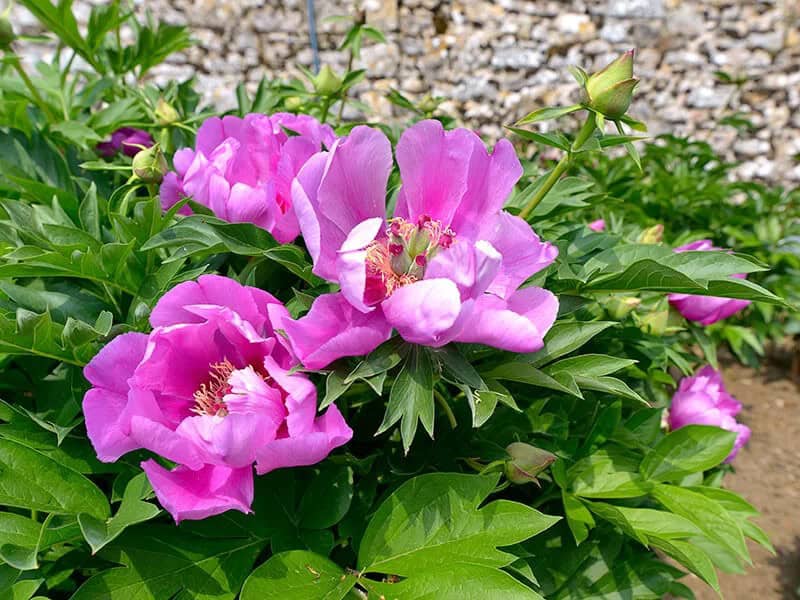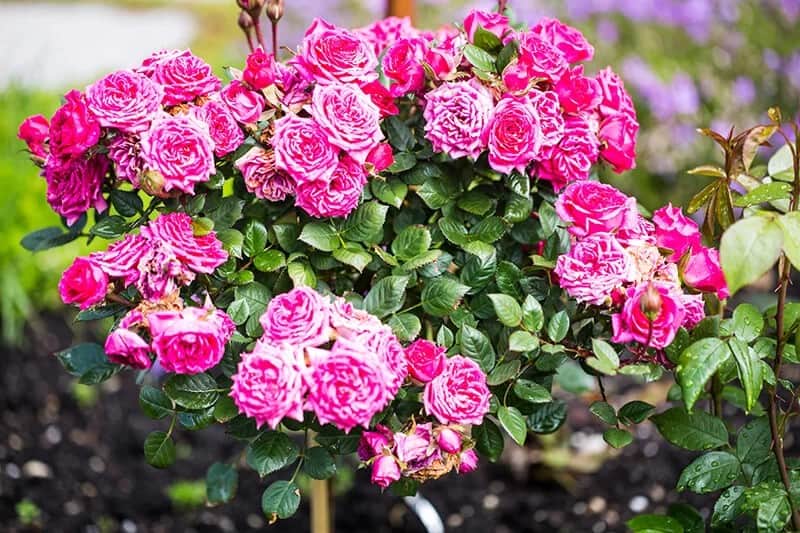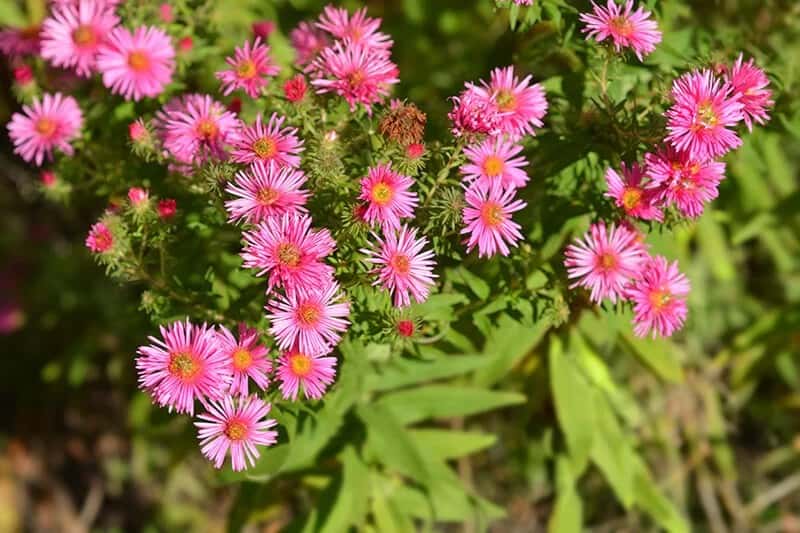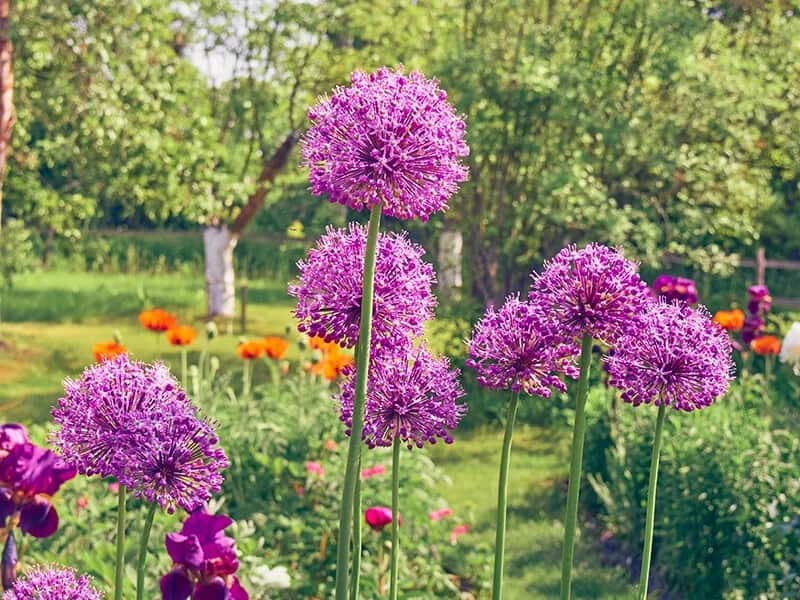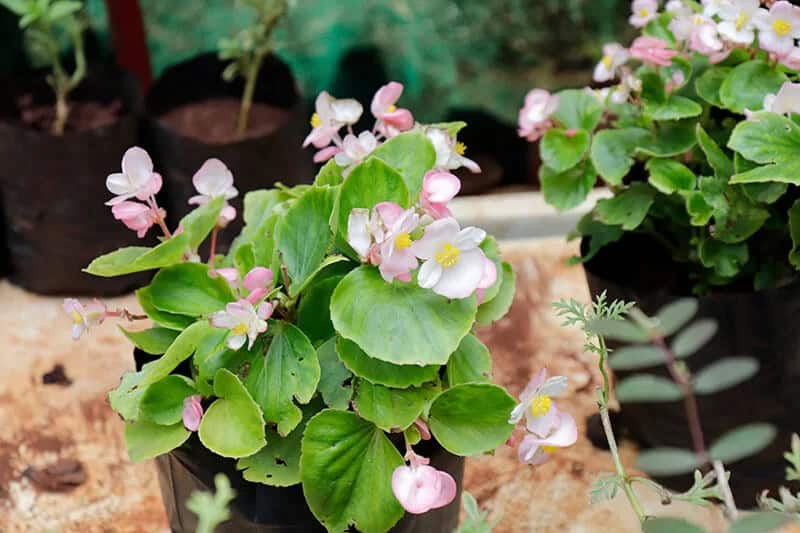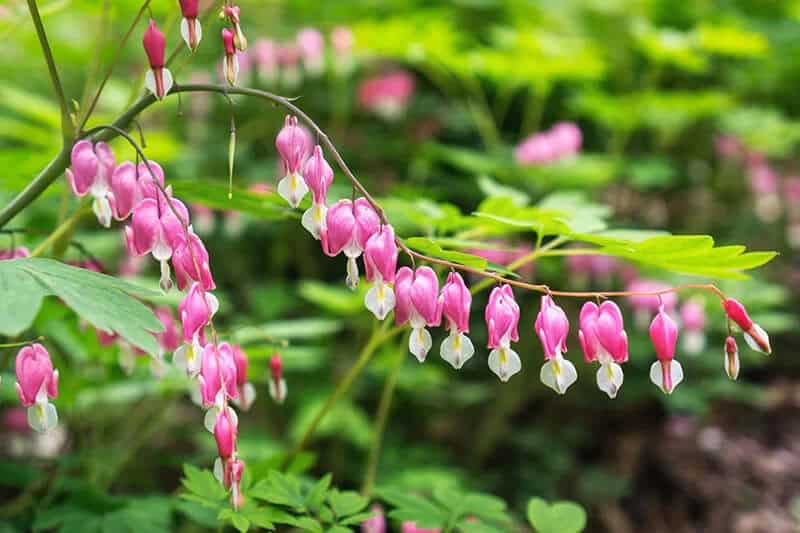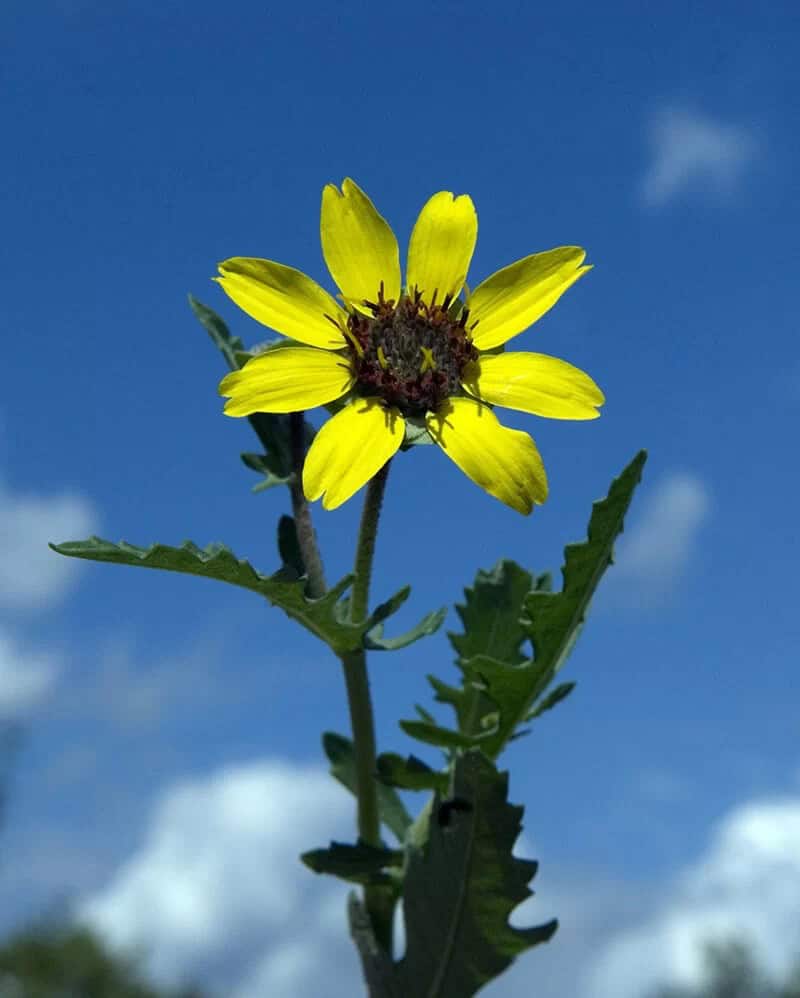Selecting the perfect perennial flowers for your garden landscape doesn’t have to be overwhelming. With the understanding that perennials create a lasting design, it’s natural to feel a sense of responsibility in making the right choice. Yet, gardening should be an enjoyable and stress-free experience. By choosing the ideal types of perennials for your specific space, you can transform your garden into a thriving oasis that brings you joy for years to come.
27 of the Most Magnificent Perennial Flowers to Plant in a Landscape for Dazzling Blooms All Season Long
When crafting your unique landscape design, consider two essential elements: color and flower height. To create visual interest, introduce a palette of contrasting hues unless you’re aiming for a cohesive monochromatic scheme. Furthermore, ensure that taller blooms are strategically placed behind shorter ones to maintain harmony and depth in the garden.
Butterfly Flower (Asclepias Tuberosa)
Butterfly flowers, with their vibrant orange blooms, are a haven for these delicate creatures, providing crucial shelter for monarch butterfly larvae. While it may take a few years for them to reach maturity, the end result is well worth the wait. Not only do these flowers attract butterflies, but they also spread joy and cheerfulness wherever planted. For optimal growth, butterfly flowers require dry to medium water levels, average soil that drains well, and full sun.
With growing zones ranging from 3 to 9, this low-maintenance beauty can thrive in a variety of environments. Blooming season typically runs from June to August, making it an excellent choice for adding some color and life to your outdoor space during the warmer months.
Buffalo Rose (Callirhoe Involucrata)
With its striking magenta blooms, the buffalo rose is sure to bring a touch of wild beauty to any landscape. This hardy perennial thrives in well-draining soils and full sun, making it an excellent choice for rock gardens or native-plant arrangements. From late spring to early summer, its large, cup-like flowers will add a cheerful ambiance to your outdoor space.
Whether you’re looking to create a sweeping romance reminiscent of the American prairies or simply want to add some drama to your garden, the buffalo rose is an excellent choice.
Allegheny Monkey Flower (Mimulus Ringens)
The Allegheny monkey flower is a showstopper in any garden. Its unique combination of long-lasting blooms and adaptability to wet conditions makes it an ideal choice for rain gardens. The plant’s flowers come in a range of colors, from soft pink to vibrant purple – the same shade as the intense color depicted here. As you gaze upon this native flower, can’t help but notice its playful monkey face?
With its medium to wet water needs, preference for full sun to part shade, and ability to thrive in zones 3 to 8, it’s easy to see why this charming bloom is a favorite among gardeners.
Evergreen Azalea (Rhododendron ‘Boudoir’)
This lovely evergreen azalea bush boasts slightly frilled, watermelon pink flowers that bloom throughout the spring, adding a touch of elegance and beauty to any garden. When not in flower, its glossy, vibrant foliage provides year-round visual interest, making it an excellent choice for pairing with other perennial blooms. As an added bonus, the plant’s mild fragrance makes it perfect for planting near seating areas where you can appreciate its subtle scent.
Big Leaf Hydrangea (Hydrangea Macrophylla ‘Alpenglühen’)
Hydrangeas are a beloved perennial choice for many gardeners, and it’s easy to see why. These stunning bushes offer more than just beautiful blooms – their large, lush green leaves provide texture and interest even when the flowers aren’t in season. But what makes hydrangeas truly unique is the way soil chemistry can impact the color of their flowers.
Typically, pink or blue hues depend on soil conditions, but ‘Alpenglühen’ varieties take it to the next level with blooms ranging from vibrant pink to deep red. If you’re looking to bring some drama and elegance to your garden, hydrangeas are definitely worth considering. With medium water needs, rich and well-draining soil, and a growing zone of 6 to 9, these flowers are relatively low-maintenance and can thrive in part shade.
Balloon Flower (Platycodon Grandiflorus ‘Komachi’)
Imagine strolling through a garden filled with vibrant, blue balloon-shaped blooms that remain delightfully closed throughout the warmest months of the year. The sheer whimsy and charm of these flowers are sure to bring a smile to your face. Each blossom measures 2-3 inches across and stands at an impressive 24 inches tall. With full sun to part shade, well-drained, loamy soil, and a growing zone suitable for zones 3 to 8, this variety is perfect for adding a playful touch to any outdoor space.
As the days unfold from June to August, you’ll be treated to an ever-changing display of blue floral balloons that will keep your garden looking fresh and exciting all summer long.
Bee Balm (Monarda Didyma ‘Pink Frosting’)
Bee balm is a perennial flower that not only attracts people but also provides a haven for pollinators. Its tubular flowers stand upright, creating a striking visual display. Typically, bee balm boasts an intense crimson red hue, which can be challenging to pair with other garden elements. However, the ‘Pink Frosting’ variety offers a unique solution for those who want to incorporate this beneficial flower into their pink-themed gardens.
This cultivar’s subtle coloration allows it to blend harmoniously with its surroundings, while still providing the same level of support for pollinators that its more vibrant counterparts do. With its medium to wet watering needs, rich and moisture-retentive soil, tolerance for clay-heavy soils, growing zones 4 to 9, and full sun to part shade light requirements, bee balm is an attractive addition to any garden.
Clematis (Clematis ‘Evijohill’ Josephine)
When looking for statement pieces for your garden or indoor spaces, it’s hard to beat the show-stopping beauty of clematis plants with double flowers. What sets this variety apart from others is its stunning pink-streaked blooms that are sure to draw attention. Typically, clematis flowers come in single blooms, but these double-flowered wonders offer a level of drama and visual interest that’s hard to find elsewhere.
In terms of growing conditions, this type of clematis requires well-draining fertile soil, medium watering needs, and can thrive in zones 4 through 9. They also need full sun to partial shade, making them suitable for a variety of environments. The blooming season typically runs from June to September, offering months of colorful displays.
For those seeking an uncomplicated yet striking addition to their space, these double-flowered clematis are definitely worth considering.
Columbine (Aquilegia Vulgaris var. Stellata ‘Ruby Port’)
The Ruby Port columbine is a stunning heirloom variety that has been delighting gardeners for centuries. Its deep burgundy color, reminiscent of a fine wine, is a true showstopper. Not only will this beauty add refinement to any planting space, but its rich hue also makes it a magnet for hummingbirds. As an added bonus, the Ruby Port columbine thrives in well-draining soils and can tolerate a wide range of soil types, making it a versatile addition to any garden.
With its medium water needs and ability to grow in zones 3 to 8, this columbine is perfect for gardeners looking to add a touch of elegance to their outdoor spaces. When the blooms arrive in April and May, they’ll be a sweet reminder of the beauty that awaits each spring. In full sun to part shade, the Ruby Port columbine will truly come into its own, offering hours of enjoyment as you watch it grow.
Late Tulip (Tulipa Tarda)
Tulips, with their vibrant colors and unique shapes, are a perennial favorite among gardeners. Not only do they come in a wide range of varieties, but each bulb is capable of producing multiple blooms, making them a great choice for adding a pop of color to your landscape. In terms of symbolism, tulips have long been associated with lifelong happiness, long-lasting marriages, and undying love, making them a thoughtful addition to any garden or bouquet.
As for growing conditions, tulips require medium amounts of water, average soil that drains well, and prefers soils rich in humus. They thrive in zones 3-8 and can tolerate full sun, although they may require some afternoon shade in warmer climates. Blooming season typically occurs from March to April, making them a great choice for early spring gardens.
One of the unique benefits of tulips is that each bulb produces multiple flowers, allowing you to create a stunning display with minimal maintenance.
Double Daffodil (Narcissus ‘Cheerfulness’)
As the seasons transition from winter to spring, the sight of blooming daffodils is often a harbinger of warmer days to come. Among these perennial flowers, double daffodils stand out for their extra flair, featuring a showy puff of petals that adds an extra layer of charm. The ‘Cheerfulness’ variety, with its creamy white blooms and subtle fragrance, is a particular standout.
With medium water requirements, tolerance of drought when dormant, and average soil needs, these flowers are relatively easy to care for. They thrive in zones 3-8, preferring full sun to part shade and blooming in April. A symbol of childhood joy and admiration, double daffodils bring a touch of whimsy and delight to any garden or bouquet.
Iris (Iris Germanica)
The majestic iris is a sight to behold, especially when its large, showy petals are bathed in the warmth of the sun. As if this weren’t enough, the plant’s symbolic associations only add to its allure. The fire and victory symbolism imbued within the iris is a testament to its impressive stature and regal demeanor. In terms of growing conditions, irises require a medium level of watering, tolerating drought but thriving in well-draining soil rich in humus.
They can be found growing in zones 3 to 10 and demand full sun exposure. The blooming season typically falls in May, making it a popular choice for gardeners who want to add some drama to their outdoor spaces. While there are many unique iris varieties available, those belonging to Iris germanica are particularly striking, with their purple-hued petals and bright yellow beards.
Rose of Sharon (Hibiscus Syriacus ‘Helene’)
The ‘Helene’ rose of Sharon bush is a perennial flower that requires minimal effort to produce an abundance of long-lasting blooms. Its striking white flowers, featuring a distinctive raspberry-colored eye, can be trained to form a beautiful hedge, adding decorative distinction to your outdoor spaces. With a tolerance for poor soils and mild drought, this plant thrives in zones 5-8 and can tolerate full sun to part shade.
The blooming season typically runs from June to October, with a range of colors available including pink and lilac.
Trumpet Lily (Lilium Longiflorum ‘White Heaven’)
The humble lily is often overlooked in favor of showier blooms, but it’s a gem that deserves attention. Its symbolism speaks to purity and justice, making it a popular choice for wedding bouquets and other celebrations. To cultivate this beauty, you’ll need medium water levels, average soil that drains well and has an abundance of organic matter, and a spot with full sun to partial shade. The growing zones are quite forgiving, ranging from 5 to 8.
As the blooms emerge in July and August, you can’t help but be struck by the sheer elegance of the snowy white petals and bright green foliage. With minimal maintenance required, these perennials will provide a stunning display for years to come.
Coneflower (Echinacea ‘Aloha’)
Among the array of perennial flowers, coneflowers stand out for their low-maintenance requirements, vibrant blooms, and remarkable soil adaptability. These striking plants can thrive in a range of conditions, from dry to medium water needs, average to well-draining soils, and even tolerate poor soil quality. What’s more, they provide a haven for birds, butterflies, and other pollinators, making them an attractive addition to any garden. And the best part?
You don’t need to travel to a tropical paradise like Hawaii to appreciate their beauty – coneflowers can be enjoyed right in your own backyard. With full sun to partial shade lighting, growing zones 3-8, and blooming from June to August, these versatile flowers are an excellent choice for any gardener looking to add some visual interest and attract beneficial wildlife.
Crape Myrtle (Lagerstroemia ‘Acoma’)
White crape myrtle is a versatile and long-lasting perennial that thrives in a variety of conditions. Its medium water needs make it tolerant of drought, while its average soil requirements are well-suited for clay-type soils. This beauty can be grown as a tree or shrub, depending on the climate.
With full sun requirements, blooming season from July to September, and growth zones ranging from 6 to 9, white crape myrtle is an excellent choice for gardeners seeking a low-maintenance yet visually striking addition. Its white flowers blend seamlessly with any color palette, making it an ideal companion for annuals.
Common Lilac (Syringa Vulgaris ‘Monge’)
Common lilac, with its intoxicating aroma and vibrant purple blooms, is an excellent choice for anyone looking to add a touch of youthful charm to their landscape. As a symbol of friendship and love, this perennial flower is sure to bring joy and serenity to any outdoor space. Growing conditions are relatively straightforward: common lilac thrives in medium water needs, slightly acidic soil with good drainage, and full sun.
With a growing range of zones 3-7, it’s easy to incorporate into most gardens. And the best part? Blooms arrive in April and May, bringing with them an explosion of color and fragrance that’s sure to ease stress and lift spirits. Whether you’re looking for rich purple flowers or cool white blooms, there’s a variety of common lilac out there to suit your taste.
Peony (Paeonia Lactiflora ‘Bowl of Beauty’)
The majestic peony, a symbol of bashfulness and prosperity, thrives in medium water conditions and rich, well-draining soil. Its ideal growing zones range from 3 to 8, where it can bask in the warmth of full sun to partial shade. While its blooming season is short-lived, typically in May, peonies reign supreme as one of the most coveted flowers in any garden.
For those seeking to elevate their peony game, the ‘Bowl of Beauty’ variant boasts an impressive double bloom, showcasing the plant’s elegance and glamour.
Floribunda Rose (Rosa ‘Wekplapep’ Scentimental)
As gardeners craft their perennial landscapes, few choices evoke timeless elegance like the classic rose. The eternal allure of red, white, or pink blooms is undeniable, but there’s a twist to be found in the variegated varieties that offer a unique charm. Each flower emerges with its own distinct pattern, a constant reminder that beauty can unfold in countless ways.
With their medium water needs, slightly acidic soil, and well-drained loam-type conditions, these roses thrive in zones 4 through 9. Full sun is ideal for optimal blooming from May until the first frost, ensuring a prolonged display of beauty.
Blanket Flower (Gaillardia ‘Frenzy’)
Attracting butterflies and adding a pop of vibrant color to your garden is as easy as planting a patch of blanket flower. This nurturing symbol has a trifecta of appeal: it’s a butterfly magnet, blooms for most of the growing season, and boasts intense hues that are rarely rivaled by other perennial flowers.
To create the perfect environment, provide blanket flower with dry to medium watering, average well-draining soils (though it can tolerate poor soil types), and place it in a spot that receives full sun. With a growing zone range of 5-9, this beauty will thrive in many regions. Come springtime, you’ll be treated to a stunning display from May to September.
Hollyhock (Alcea Rosea)
With its striking appearance, the hollyhock plant has long been a popular choice for gardeners seeking to add visual interest and attract wildlife. At heights of 5-8 feet, these statuesque perennials make an ideal backdrop for shorter flowering varieties. The pink variety is just one of many colors available, with options including red, white, and even the rare black hue.
But hollyhocks offer more than just aesthetic appeal – they also provide a vital source of sustenance for birds and butterflies. With medium water needs, average well-draining soil, and a thriving range of growing zones from 2 to 10, this plant is an accessible choice for gardeners of all skill levels.
New England Aster (Symphyotrichum Novae-angliae ‘Andenken an Alma Pötschke’)
🌼 New England aster is a stunning perennial flower that can add a pop of color to any garden with its abundance of pink petals. This beauty thrives in rich, moist soil types and can tolerate clay soils, making it an excellent choice for rain gardens or areas prone to waterlogging. Butterflies are also drawn to the nectar-rich blooms, which makes this plant a great addition to pollinator-friendly gardens.
To ensure a bountiful blooming season from September to October, pinch back your plants until mid-July. With its moderate watering needs and ability to thrive in zones 4-8, this flower is perfect for gardeners of all skill levels.
Ornamental Onion (Allium Giganteum)
Despite its humble name, the ornamental onion plant boasts remarkable appeal. Its sprawling, softball-sized flower clusters are truly breathtaking. When planted en masse in groups of at least seven, these perennials create a whimsical display of purple orbs that can add a touch of magic to any landscape.
With medium water needs, average soil that drains well, and full sun, this plant thrives in zones 5-8, making it an excellent choice for gardeners seeking a low-maintenance yet high-reward addition to their outdoor spaces.
Hardy Begonia (Begonia Grandis)
The hardy begonia is a stunning perennial flower that boasts delicate pink petals and vibrant yellow stamen. Its beauty is reminiscent of a work of art. When it comes to growing conditions, this plant thrives in medium to wet environments, rich soil with good drainage, and partial shade to full shade. In terms of climate, hardy begonias are ideal for zones 6 to 7. One notable characteristic is its ability to self-seed, allowing you to enjoy fresh blooms without any extra maintenance.
Additionally, if your winters are particularly harsh, mulching may be necessary to protect the plants. Overall, the hardy begonia is a low-maintenance yet visually striking addition to any garden.
Bleeding Heart (Lamprocapnos Spectabilis)
These heart-shaped perennials require no emotional turmoil to appreciate their aesthetic appeal. Their symbolic significance stems from the obvious visual representation of their namesake. Despite this, they can thrive in a variety of environments, including part shade to full shade conditions that tolerate heavy shading. Medium water needs and well-draining soil provide an optimal setting for growth.
With a growing zone range of 3-9, these artistic flowers are versatile enough to be cultivated across diverse climates. Blooming from April to May, they offer a brief yet stunning visual display. Plant them in a shaded area and revel in the beauty that unfolds.
Chocolate Flower (Berlandiera Lyrata)
Combining contrasting elements in your garden design is crucial for creating visual harmony. The chocolate flower, with its striking combination of simple yellow petals and intricate green and brown centers, is a great example of this principle. Moreover, the flower’s unique feature – its potent chocolate scent – adds an extra layer of depth to its beauty. As you plan your garden, remember that this perennial requires dry to medium soil moisture, sandy alkaline conditions, and full sun exposure.
With proper care, it will thrive in USDA zones 4 to 10, blooming from May to October.
Hellebore (Helleborus ‘Confetti Cake’)
Hellebores, also known as Christmas roses, bring a touch of elegance to any garden. One of the earliest signs that spring is around the corner, they burst forth with flowers in February. The ‘Confetti Cake’ cultivar is particularly striking, featuring a playful pattern of speckles that adds an artistic flair. While this unique variety may not be to everyone’s taste, hellebores come in a diverse range of colors, so there’s sure to be one that suits your space.
They thrive in alkaline, well-draining soil and prefer part shade to full shade, making them a great option for gardens with varying light conditions. With growing zones ranging from 4 to 9, hellebores are a versatile choice for many gardeners.
27 Perfect Perennial Flowers to Plant in Your Garden for a Showstopping Outdoor Space
When selecting your favorite perennial flower pictures, it’s crucial to consider how these blooms will interact with other garden elements, such as annuals and winter interest. A harmonious combination of colors can greatly enhance the overall aesthetic appeal of your outdoor space. To ensure a constant display of showy flowers, choose perennials with staggered blooming seasons, allowing for a continuous array of colors throughout the growing season.
If a perennial’s flowering period is brief, consider its foliage, which can still provide visual interest during the winter months. By choosing plants that resonate with you and your personal style, you’ll create an outdoor landscape that will be cherished for years to come.
